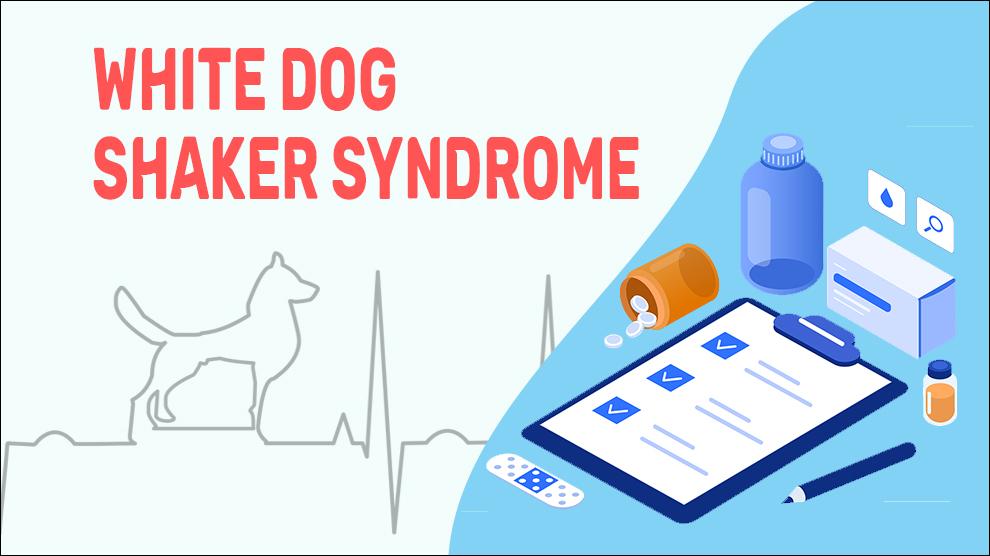What Is White Dog Shaker Syndrome?
Shaker syndrome, or white shaker disease syndrome, is a neurological disease that involves generalized head and body tremors without any infectious or other known cause. Also known as idiopathic cerebellitis or generalized tremor syndrome (GTS), this occurs mostly in white, young, small-breed dogs that suffer from involuntary tremors while they are doing voluntary activities.
Typically dogs acquire GTS between the ages of 3 months - 3 years. The manifestation of this disease is sudden and usually worsens without treatment. Fortunately for the affected dogs, this condition is not painful or hinders the affected dogs’ perception or awareness, similar to seizures. The etiopathogenesis of this disease––along with its association with white haircoats and mode of inheritance ––is completely baffling.
Veterinary researchers hypothesize that a malfunction of the immune system or an earlier infection may be responsible for the involuntary tremors. Tremors are spontaneous, recurring, rhythmic, swinging movements of antagonistic muscle groups. These tremors are normally distinguished by pace, regularity, and type of movements; they may be localized to a particular area or they may be generalized (involve the entire body).
GTS tremors are often difficult to distinguish as tremors are a rather ordinary neurologic irregularity in many disorders of the peripheral nervous system (PNS) and the central nervous system (CNS). There is also something called white little shaker dogs. The condition was named like this because it was traditionally recognized in the small, young, white breeds of dogs such as the poodle, westies, and Maltese, while dogs with other coat colors are also at risk. They are typically small-medium breed dogs (<33lbs/15 kg) and < 2 years of age.
Symptoms Of White Dog Shaker Syndrome
- Head and body muscle tremors
- Uncontrolled rapid eye movements
- Head tilt
- Incoordination
- Shivering
- High-stepping gait
- Hypermetria: Voluntary muscular movement overreaching the intended location
- Weight loss
Treatment Options For White Dog Shaker Syndrome
Immunosuppressive corticosteroids: Azathioprine, prednisolone, or prednisone
Anxiety medications such as buspirone, Clomipramine (Clomicalm), and Alprazolam (Xanax)
Pain medications:
NSAIDs: Rimadyl, Previcox, Deramaxx, Galliprant, Metacam
Opioids: Morphine, hydromorphone, butorphanol, codeine, fentanyl, and buprenorphine
When to see the Vet?
Contact your vet right away, if you notice any of the following:
- Abdominal tenderness and pain
- Bad breath
- Soft and/or bloody stools
Home Remedies For White Dog Shaker Syndrome
- Although anxiety medications may have side effects, the gains often greatly prevail over the risk
- The shakers syndrome treatment provided these days is to decrease the incidence and severity of the tremors
- The dog can continue to lead a healthy life with regular follow-ups by your vet
- Keep a tremor diary and note the important happenings
How To Prevent White Dog Shaker Syndrome?
After diagnosis with shaker syndrome, it is significant to take action to stop breeding the dogs so as to remove suspected dogs from the gene pool.
Affected Breeds Of White Dog Shaker Syndrome
Small Dog Breeds, White Dog Breeds, West Highland White Terrier, Maltese, Bichon Frise, Poodle
Causes And Prognosis For White Dog Shaker Syndrome
1. Causes:
- Inherited/Congenital condition
- Cerebellum Inflammation which helps to regulate voluntary muscle movements
- Spinal cord Inflammation and the covering of the brain
- Non-suppurative (aseptic) encephalomyelitis
- Irregularities in the immune system affect the Neurotransmitter deficiency in the levels of melanin, nor-epinephrine, and dopamine
2. Mortality:
Shaker syndrome itself is not usually considered to cause death but is usually more of a causal factor for other health complications.
3. Diagnosis:
- Complete blood count (CBC), an electrolyte panel, and a urinalysis
- Tissue sample (biopsy)
- Erythrocyte sedimentation rate
- Ultrasound
- Electrophysiology
4. Prognosis:
Although it is really difficult to predict chances for recuperation as the level and degree of the disorder varies significantly for each affected dog. While the dog may surprisingly clear of symptoms, it may present with a new set of symptoms within a short period of time.
When To See A Vet For White Dog Shaker Syndrome?
Contact your vet right away, if you notice any of the following:
- Abdominal tenderness and pain
- Bad breath
- Soft and/or bloody stools
Food Suggestions For White Dog Shaker Syndrome
- Leafy greens (collard greens, Kale, spinach, lettuce)
- High-quality protein (lean beef, seafood, peanut butter, Cottage Cheese, lentils, eggs)
- Essential fatty acids (salmon, whitefish, mackerel, cod, tuna, herring, sardines, trout, etc)
- Broth or stock of boiled chicken bones
- Antioxidants: Blueberries, Raspberries, Strawberries, Cranberries, Steamed broccoli, Cooked yellow squash, Red cabbage, etc
- B vitamins: Liver and organ meats, Leafy greens, Salmon, beef, oysters, legumes, etc
- Vitamin E: Salmon, Trout, Eggs, Avocado, Spinach, Sunflower Oil, Safflower Oil, etc
- Plant-based proteins: Chickpeas, Peanuts, lentils, Sprouted Whole Grain Bread, etc
Conclusion
Although shaker syndrome is curable, most dogs require a combination of medication and special feeding. Pets can live a longer, quality life with the right supportive care and medications. Consult with your veterinarian to clarify the concerns you have about tremors.

















